Forklifts are a crucial part of many industries, but forklift repair cost and maintenance can be a significant expense. Understanding the factors that contribute to these costs, as well as strategies to minimize them, can help businesses optimize their operations while effectively managing expenses. In this blog post, we’ll delve into the world of forklift repair cost, common issues, and the ways to prevent costly repairs and extend the life of your equipment.
Key Takeaways
- Understanding the factors that influence forklift repair costs is key to effectively managing expenses.
- Regular maintenance, operator training, and performance monitoring are essential for reducing repair costs and extending a forklifts lifespan.
- When selecting a service provider it’s important to consider experience & expertise, pricing transparency, and warranty & support options in order to maximize savings.
Breaking Down Forklift Repair Cost and Maintenance
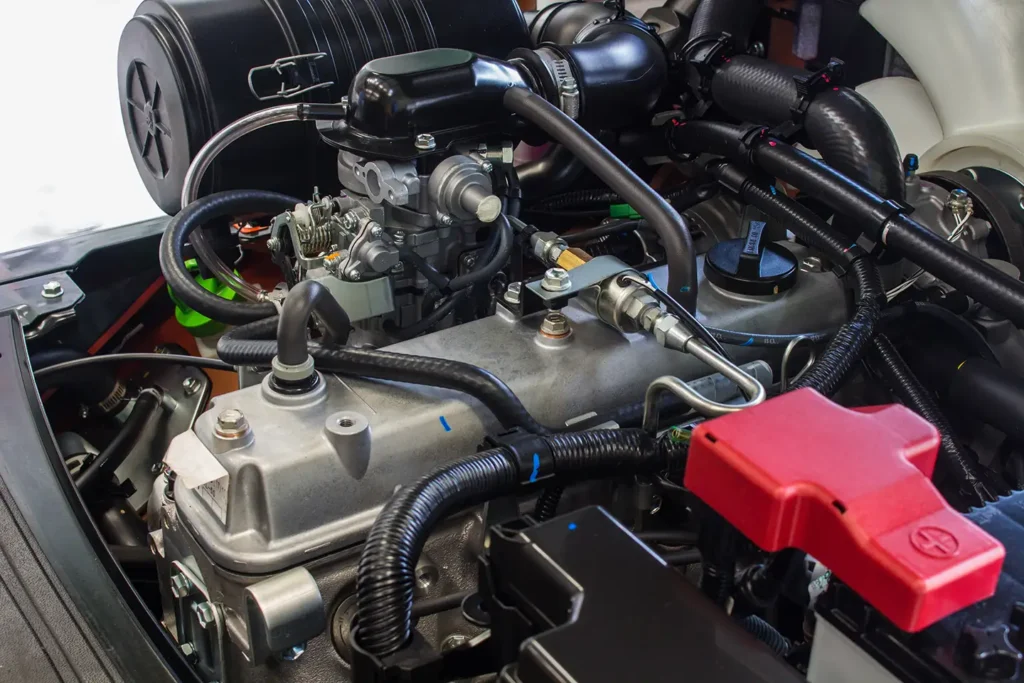
Forklift repair costs in Houston can be influenced by a variety of factors, including labor charges, the cost of parts and components, and the complexity of the repair. Understanding these factors is key in managing your forklift maintenance and repair expenses effectively. Additionally, manufacturer warranties for forklifts are often limited, covering only issues with workmanship during the production process and not significantly increasing the average forklift cost for the end-user.
Forklift dealers and repair companies calculate the cost per operating hour to determine the amount of a full maintenance contract. Inadequate propane system maintenance can have a considerable financial impact on a forklift fleet over a five to seven-year period, due to both downtime and increased fuel consumption, leading to more service calls and higher fuel costs.
Labor Charges
Labor charges for forklift repairs can differ based on the technician’s expertise, location, and the time required to complete the job. The location can impact labor charges, as certain repair shops may impose higher fees for on-site repairs, depending on factors such as travel time.
The complexity of the repair job can also affect labor charges, with more complex repairs requiring additional time, specialized skills, and resources. Be mindful of potential additional labor costs for emergency or after-hours forklift repairs, since some companies may impose a minimum service fee for off-hours dispatches.
Parts and Components
The cost of parts and components necessary for forklift repairs may vary, depending on the specific part and its availability. Frequently replaced components in a forklift include:
- Forks
- Brakes
- Masts and chains
- Oil and air filters
- Tires
- Lift assembly components
The cost of a replacement forklift engine can vary depending on the brand, model, and where it is purchased, generally ranging from $1,000 to $5,000, which can significantly impact the overall purchase price of a forklift. Similarly, the price of a new forklift transmission can range from $8,000 to $13,000.
Complexity of Repair
The complexity of a forklift repair can have a significant impact on the overall cost. Elements that contribute to the intricacy of a repair include:
- Overloading
- Lack of preventative maintenance
- Mechanical difficulties
- Weight discrepancies
- Scope of damage
- Availability of components
- Complexity of the task
As the complexity of the repair increases, the amount of time and expertise needed to complete the job can lead to higher labor costs. Moreover, complex repairs may require specialized tools or parts, which can also contribute to increased costs.
Furthermore, the availability of the necessary parts for the repair can affect the time it takes to fix the forklift.
Common Forklift Repairs and Their Costs
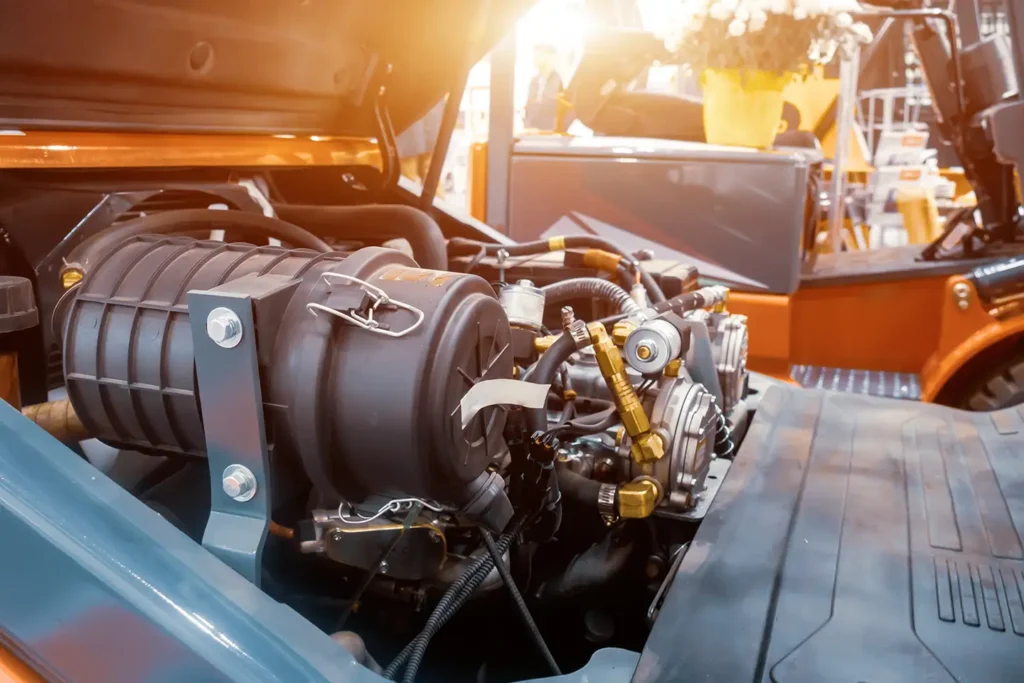
Common forklift repairs and their costs include:
- Battery and charging system issues: costs ranging from hundreds to thousands of dollars
- Tire and wheel replacements: costs ranging from hundreds to thousands of dollars
- Hydraulic system problems: costs ranging from hundreds to thousands of dollars
These repairs are crucial to maintaining the performance and safety of the forklift, and addressing them promptly can help prevent more severe issues and minimize downtime.
This section will examine the maintenance costs associated with these common repairs and some factors that may affect them.
Battery and Charging System
Repairing the battery and charging system is vital for maintaining the forklift’s performance and safety. The cost of a forklift battery can range from several hundred to several thousand dollars. Replacing a forklift battery typically costs between $2,000 and $6,000, depending on the specifications and size of the battery. A forklift battery generally has a lifespan of approximately 5 years, but with proper care and upkeep, it can be extended up to 10 years.
Factors affecting the cost of a forklift battery replacement include Ah capacity, chemistry, charging speed, cycle life, brand, and price, as well as power type, tire choices, and battery type.
Tires and Wheels
The operation of a forklift heavily relies on its tires and wheels. Replacing them may cost from a few hundred to several thousand dollars, depending on their brand and size. Factors that contribute to the wear and tear of forklift tires and wheels include:
- Inadequately maintained forklift components
- Traversing through oil and grease spots
- Engaging in practices that accelerate wear and tear
- Uneven wear and tear
- Regular contact with harsh chemicals
- Inadequate operator training and suboptimal driving habits
The procedure for replacing forklift tires and wheels typically involves:
- Jacking and blocking the forklift
- Deflating the old tires
- Uninstalling the wheel assembly
- Removing the side ring
- Dismounting the tire from the rim
- Cleaning the rim
- Mounting the new tire
- Installing the side ring
- Inflating the new tires
The cost of replacing forklift tires and wheels can vary depending on factors such as the type and size of the tire, brand, and labor charges.
Hydraulic System
Hydraulic system repairs can be expensive, with costs varying depending on the specific issue and the extent of the damage. The primary components of a forklift’s hydraulic system include the lift cylinder and the tilt cylinder. Common causes of hydraulic system problems include contamination by air or water, pump malfunctions, mechanical breakdowns, lack of oil in the system, and fluid level or quality issues.
The approximate cost of repairing a forklift’s hydraulic system is around $1,800, but the extent of damage in the hydraulic system can have a considerable influence on the cost of repair. If the damage is minor, it may be more cost-efficient to opt for a repair; however, if the damage is extensive or involves structural issues, the cost of repair may be higher. Additionally, if the damage leads to the failure of other pricey system components, the overall repair cost can rise substantially.
Preventing Costly Forklift Repairs
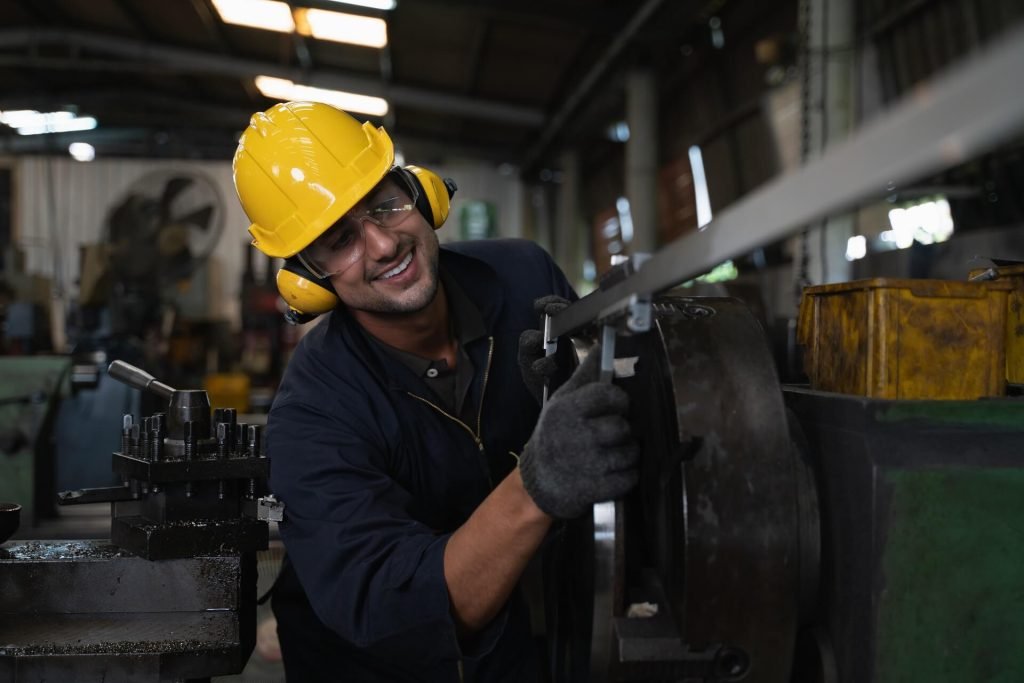
Preventing costly forklift repairs involves regular maintenance, operator training, and monitoring forklift performance to catch issues early and avoid expensive repairs. By implementing these strategies, businesses can minimize downtime, cut down repair costs, and optimize efficiency.
This section will explore in-depth the roles of regular maintenance, operator training, and performance monitoring in preventing costly repairs and extending the forklift’s lifespan.
Regular Maintenance
Scheduled inspections and oil changes, part of regular maintenance, can aid in preventing costly repairs and prolonging the forklift’s lifespan. Undertaking regular maintenance can aid in the early detection of possible issues, thus avoiding significant problems, and can help prolong the lifespan of the machine.
Fuses, fluids, and line leaks should all be inspected during regular maintenance to maximize cost savings.
Operator Training
Proper operator training ensures that forklifts are used correctly, reducing the risk of damage and costly repairs. Untrained forklift operators can cause damage by:
- driving too quickly
- engaging in horseplay or erratic driving
- not being aware of their environment
- inadequate communication with pedestrians
- inadequate training
It is recommended that refresher training for forklift operators be conducted at least every three years.
Operator training is essential in extending the lifespan of forklift parts and components, as it ensures operators are aware of the correct operation and maintenance procedures, decreasing the risk of accidents, collisions, and incorrect loading. Additionally, it covers pre and post-shift checks, enabling operators to identify potential issues promptly.
Monitoring Forklift Performance
Monitoring forklift performance and addressing issues promptly can help prevent more significant problems and reduce repair costs. Routine performance monitoring of a forklift can detect issues such as:
- Mast malfunctions
- Inconsistent mast raising and lowering
- Hydraulic pump failure
- Recurrent breakdowns
- Electrical system issues
It is recommended to routinely inspect the radiator cap and confirm that the radiator contains appropriate levels of coolant. Monitoring forklift performance can yield several advantages with regards to repair costs, such as early detection of issues, preventive maintenance, improved operator training, and optimal utilization.
The Impact of Forklift Age and Usage on Repair Costs
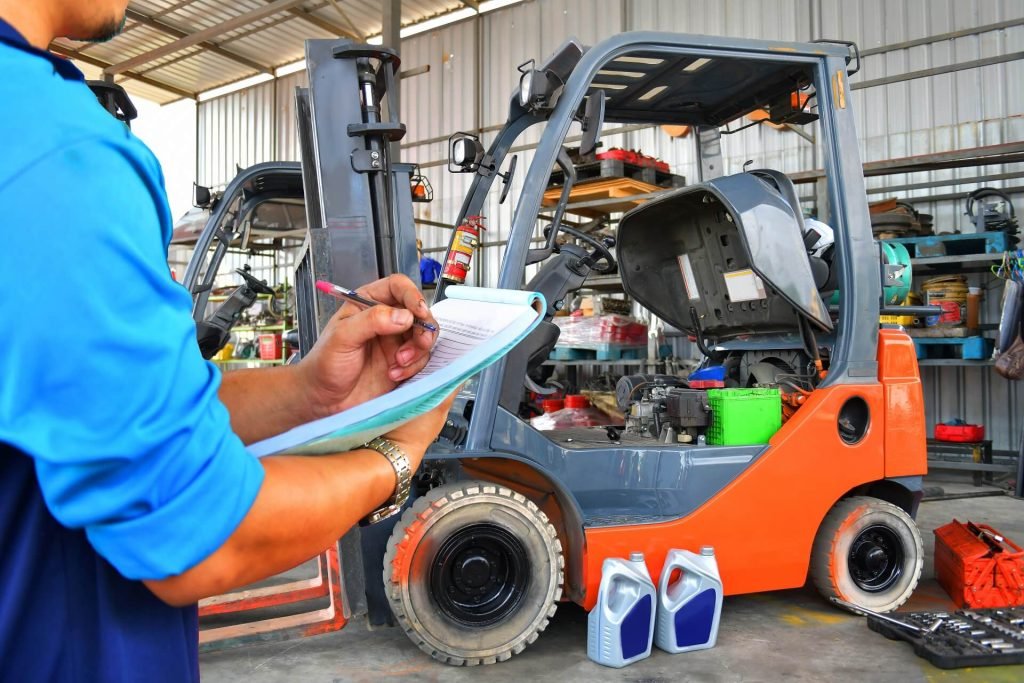
The age and usage of a forklift can impact repair costs, with older and high-usage equipment often requiring more frequent and expensive repairs. Forklifts of an advanced age tend to necessitate more regular and costly repairs, while extensive utilization of a forklift can result in more frequent and costly repairs.
This section will explore the impact of equipment aging and high usage on repair costs, along with strategies to mitigate these effects, such as utilizing replacement equipment.
Aging Equipment
Aging equipment may lack warranty coverage and be more prone to breakdowns, leading to higher repair costs. Issues commonly encountered with aging forklift equipment may include:
- Engine starting difficulties or poor idling
- Mast-related problems
- Steering issues
- Hose damage and leaks
- Failure of safety accessories
- Equipment failures and breakdowns
- Leaks
- Heightened sensitivity requiring extra attention and maintenance
Implementing regular/planned oil changes and adhering to a complete maintenance schedule can help minimize the risk of costly repairs associated with aging forklifts. To ensure the longevity of your equipment, it’s essential to perform maintenance as required.
High Usage
High usage forklifts may experience more wear and tear, increasing the likelihood of costly repairs. Generally, for electric forklifts, 10,000 operating hours can be viewed as a high amount of usage. The components most likely to experience wear and tear due to high utilization include:
- Chassis
- Mast
- Overhead guard
- Forks
- Tires
Additionally, safety devices distributed throughout the forklift truck, also known as a lift truck, may also be affected by the use of material handling equipment.
High usage can have a considerable impact on forklift repair costs, due to the regular wear and tear that occurs with frequent use and the increased likelihood of component failure and breakdown.
Replacement vs. Repair
Deciding between replacement and repair can be challenging, but considering factors such as repair costs, downtime, and the overall condition of the forklift can help make the decision easier. Repairing a forklift is typically more economical than buying a new one, but the optimal choice is contingent on the severity of the damage and the cost of repairs. Therefore, it is advisable to conduct a cost analysis to identify the most cost-effective alternative.
If the forklift necessitates recurrent and expensive repairs that are impacting your budget, it may be time to invest in a new forklift. Moreover, if the cost of maintenance surpasses the cost of acquiring a new forklift, it may be more cost-effective to replace it.
Choosing the Right Forklift Repair Service
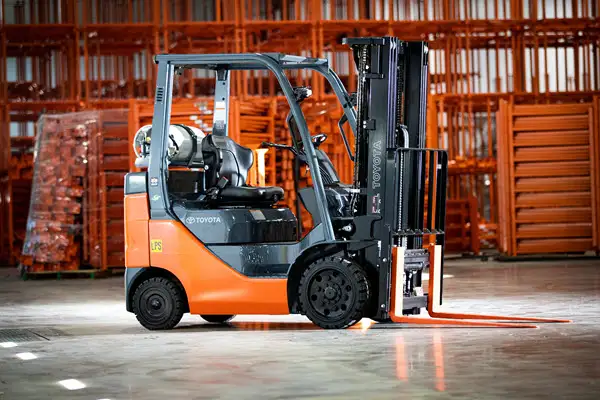
Choosing the right forklift repair service involves considering factors such as experience and expertise, transparent pricing, and warranty and support options. Selecting an appropriate forklift repair service can result in considerable savings over the duration of your fleet and minimize downtime costs.
This section will explore the significance of these factors in making the right choice for a forklift repair service.
Experience and Expertise

Choosing a repair service with extensive experience and expertise in forklift repairs can enhance reliability and efficiency, thereby reducing downtime and repair costs. A dependable forklift repair service should possess:
- Experience in servicing and repairing numerous types and brands of forklifts
- A comprehensive understanding of safety regulations
- The ability to provide preventive maintenance
Transparent Pricing
Transparent pricing, including upfront costs for labor and parts, can help businesses budget for repairs and avoid unexpected expenses. Transparent pricing in forklift repair services refers to a pricing structure that is transparent, upfront, and comprehensible for customers, guaranteeing transparency and avoiding concealed fees or surprises for the customer.
This enables businesses to accurately estimate and plan for the related expenses, allowing them to allocate the necessary funds in their budget.
Warranty and Support
A repair service that offers warranty and support options can provide peace of mind and ensure that any issues are addressed promptly and effectively. Forklift repair service providers, often managed by a dedicated service department, generally provide:
- 30-day warranty
- 60-day warranty
- 90-day warranty
- As-Is warranty
Some providers may also offer extended warranties or optional powertrain warranties.
It is important to be aware of the specifics of the warranty when purchasing a forklift to ensure proper coverage.
Key Insights for Managing Forklift Repair Costs
In conclusion, understanding the factors that contribute to forklift repair costs, as well as implementing strategies to prevent costly repairs, can help businesses optimize their operations and manage expenses effectively. By selecting the right forklift repair service, considering factors such as experience, transparent pricing, and warranty options, businesses can ensure that their forklifts remain in top condition and minimize downtime. With proper maintenance, operator training, and monitoring forklift performance, businesses can extend the life of their equipment and keep their operations running smoothly.
Frequently Asked Questions
How much is a forklift service?
Forklift servicing can cost from $1,500 to $6,000 per year, depending on the quality of your equipment and repair costs.
What is the most expensive part of a forklift?
The most expensive part of a forklift is the operator, as their wages over the life of the truck are more costly than any other part. This is due to the importance of operators’ safety, performance and running costs.
How long does it take to repair a forklift?
Repairs to a forklift can take anywhere from a few hours to a few days or weeks, depending on the complexity of the repair and the company you hire. Book your forklift service now.
What factors contribute to the cost of forklift repairs?
Cost factors for forklift repairs include labor charges, parts and components, and repair complexity.
How can regular maintenance help prevent costly forklift repairs?
Regular maintenance, including inspections and oil changes, can prevent costly repairs and extend the life of the forklift by catching issues early and keeping it in good condition.
